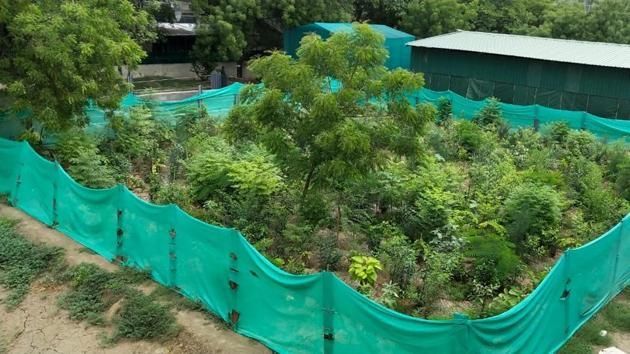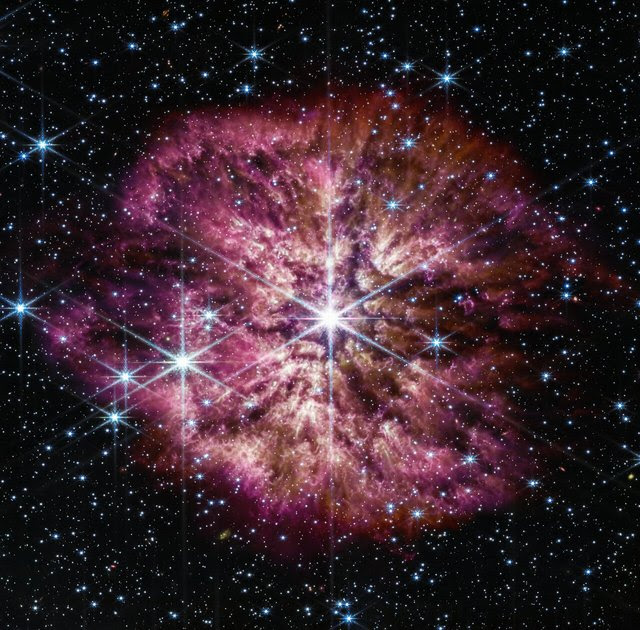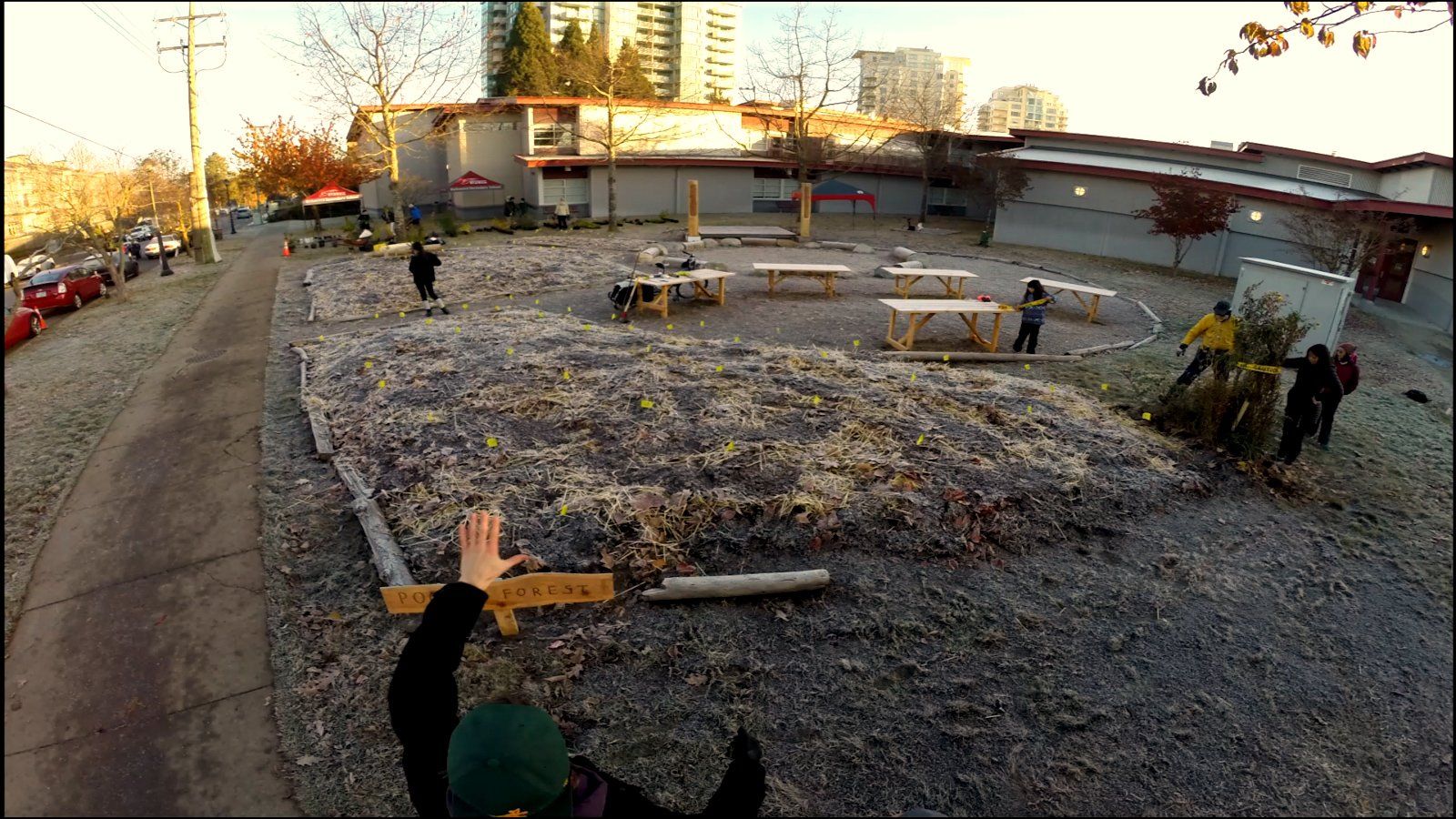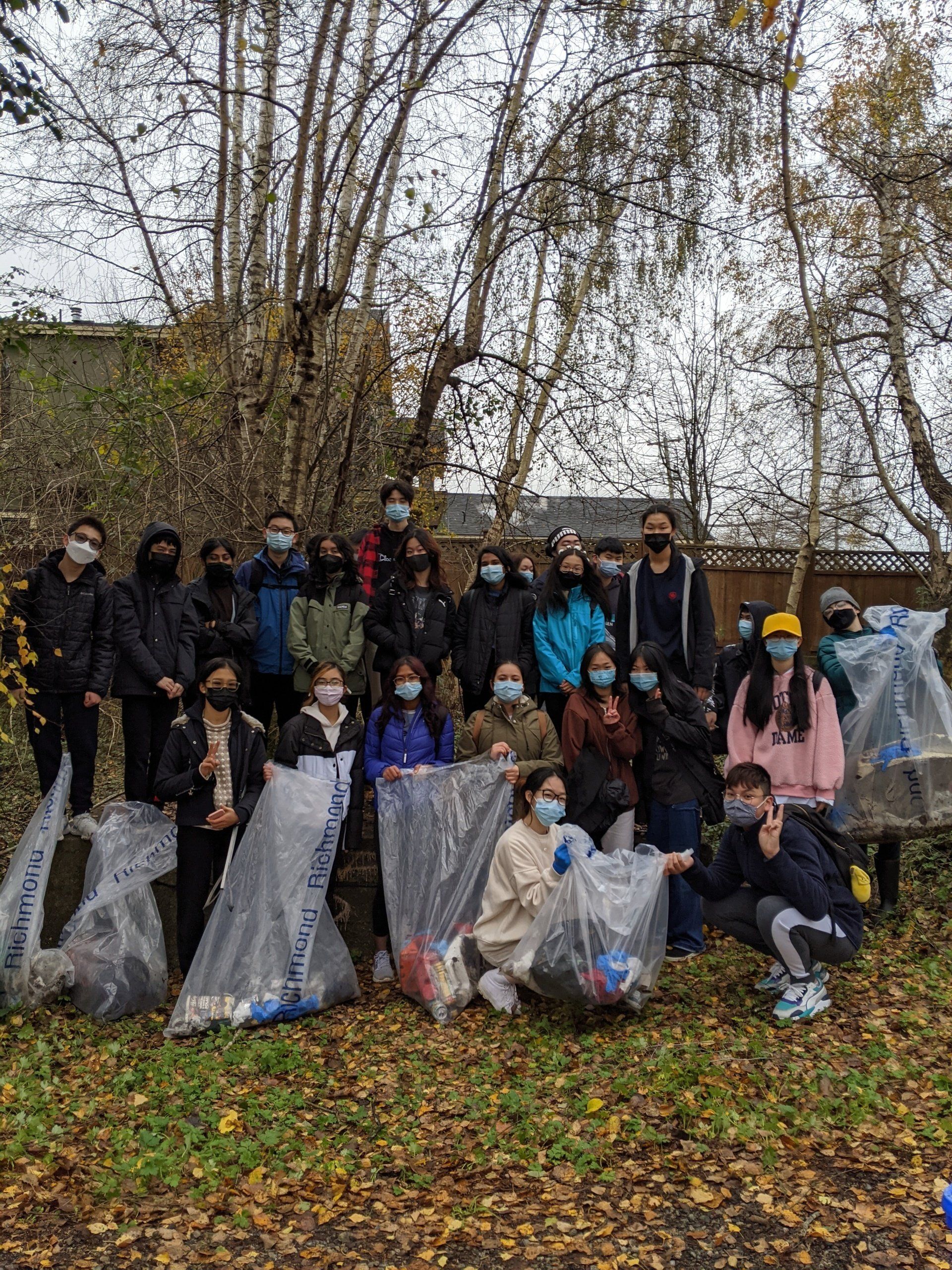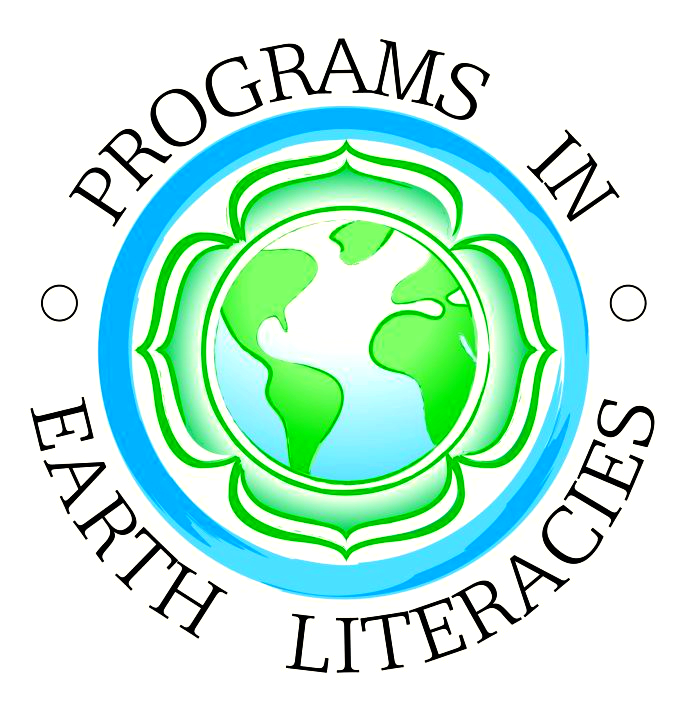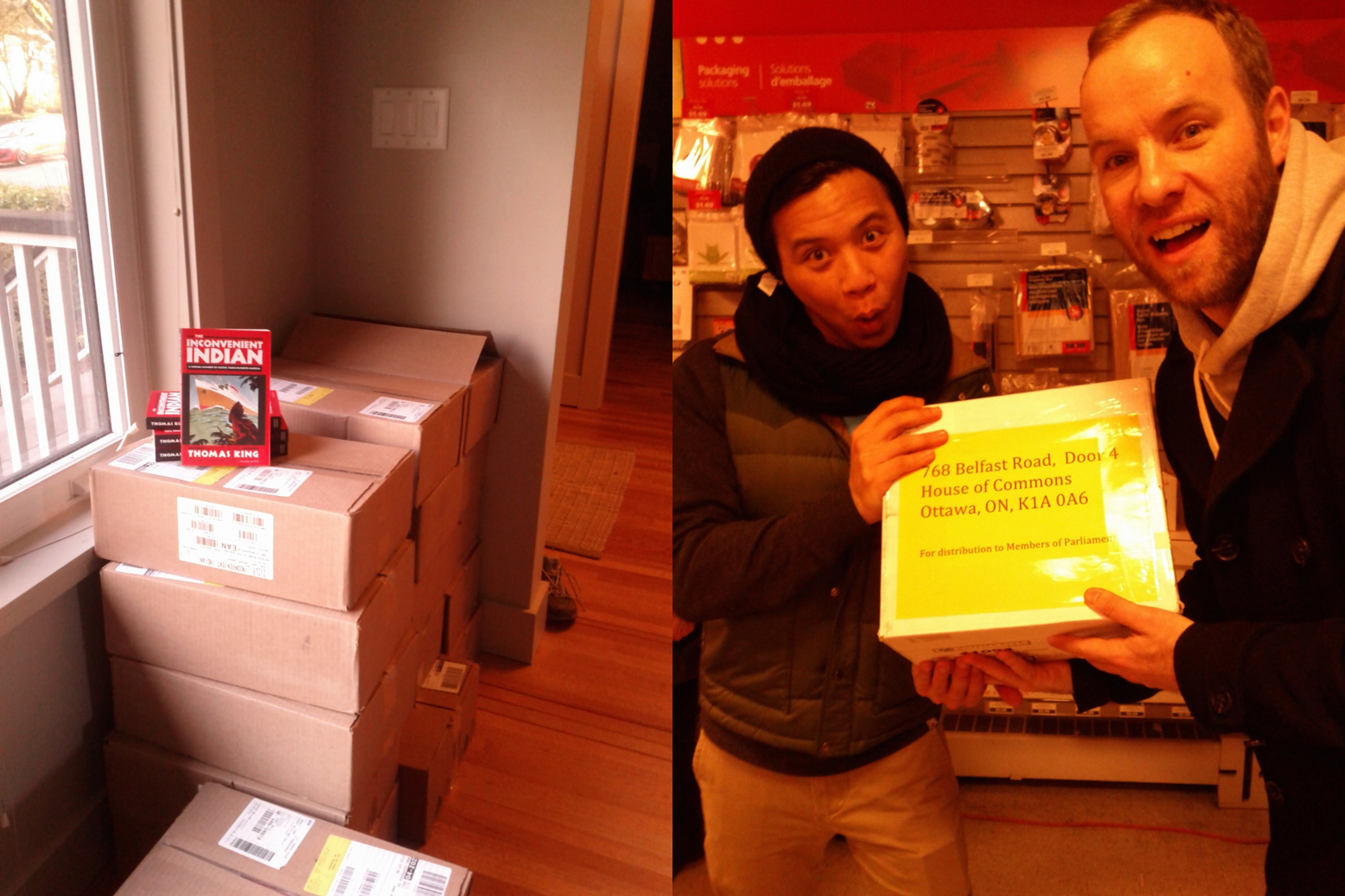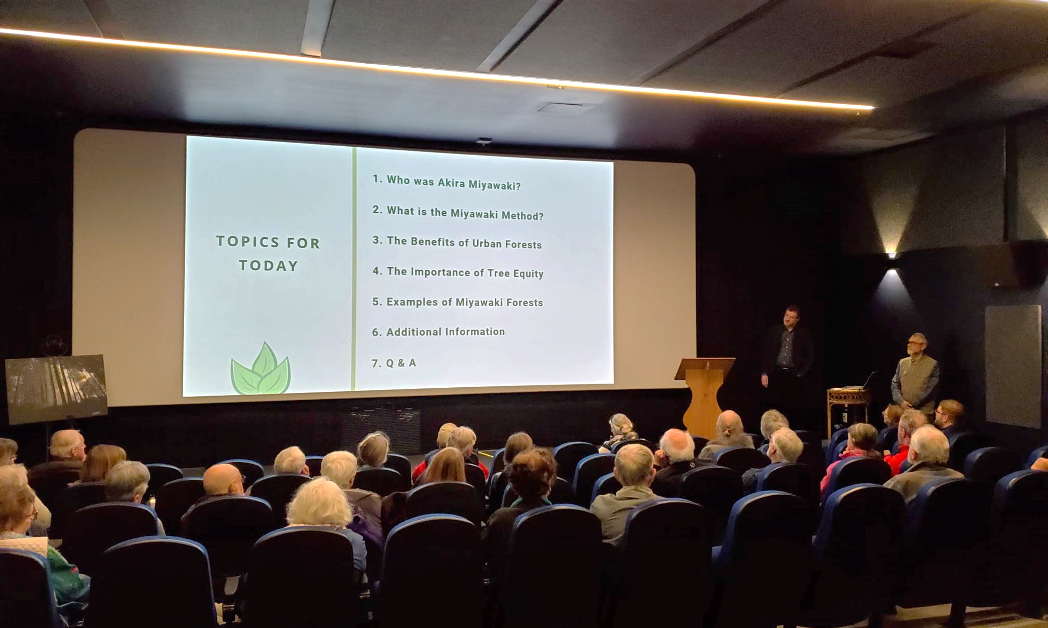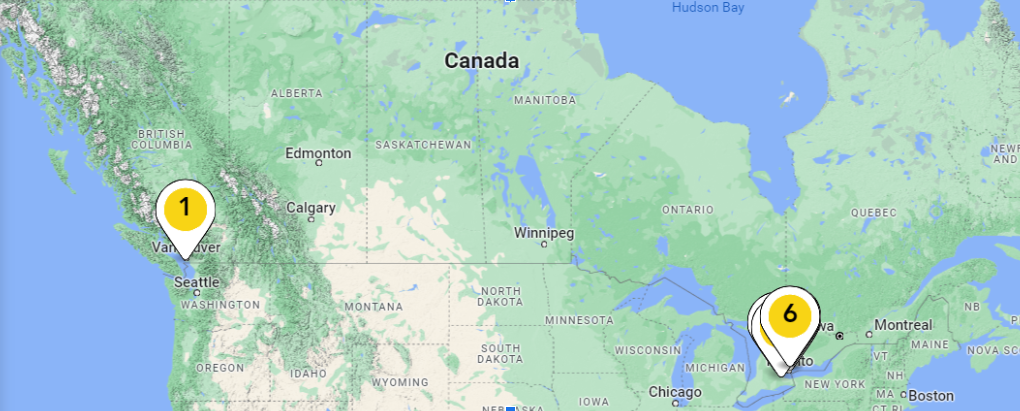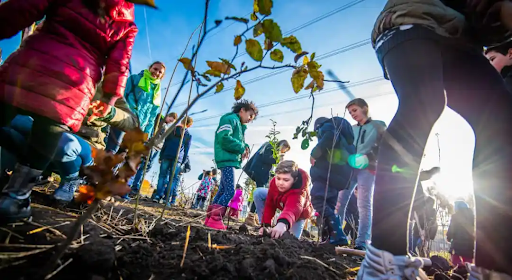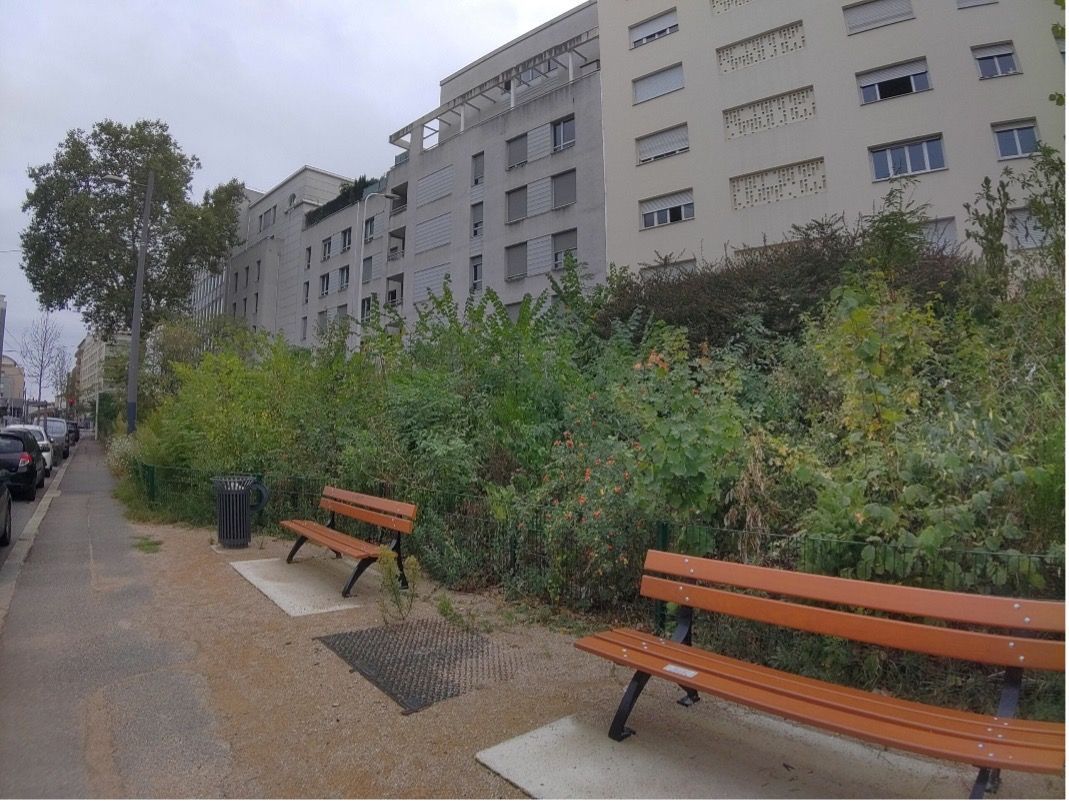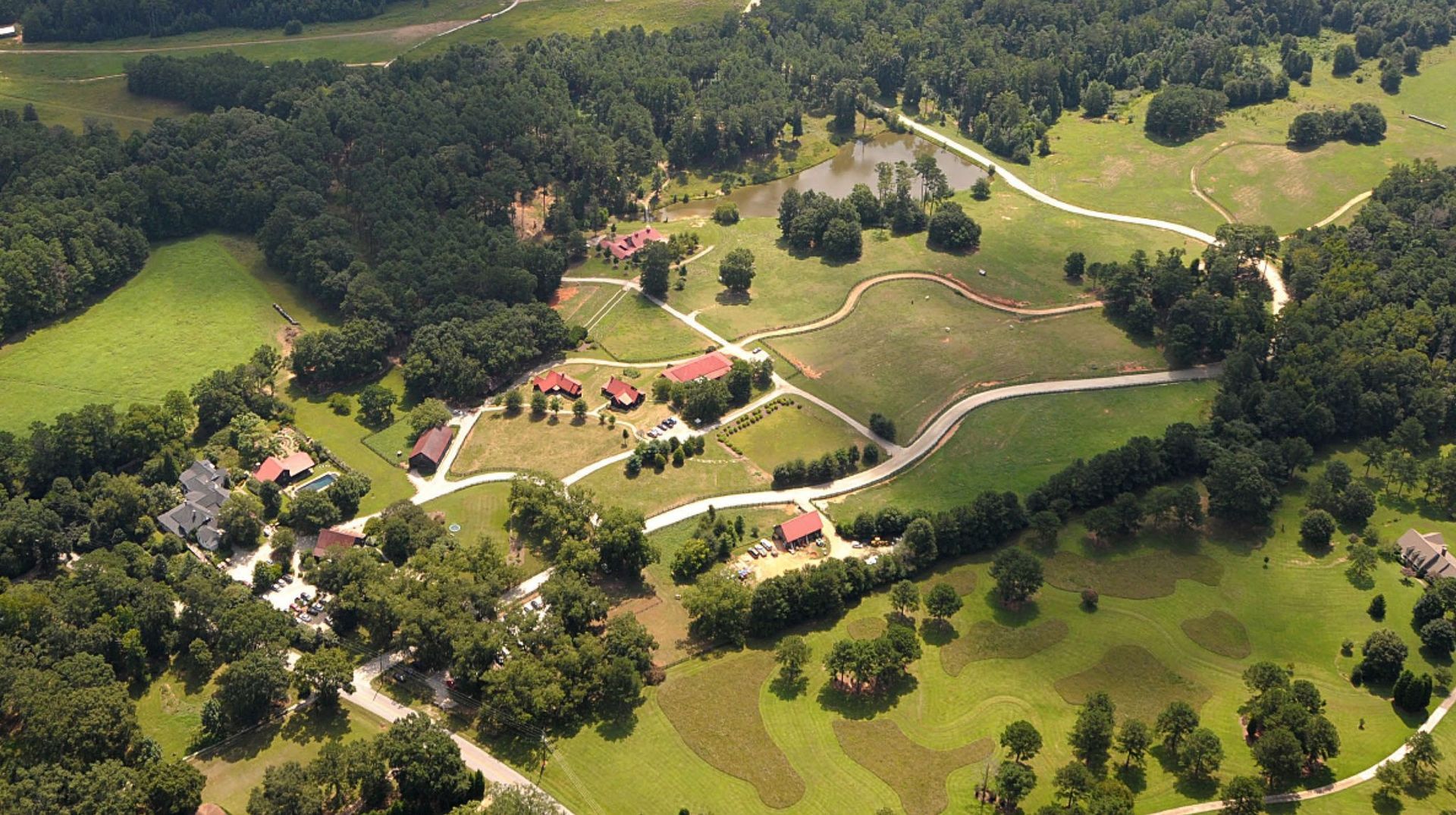Land Acknowledgments - An Unsettling Experience
Land Acknowledgments offer a chance to tell a new story
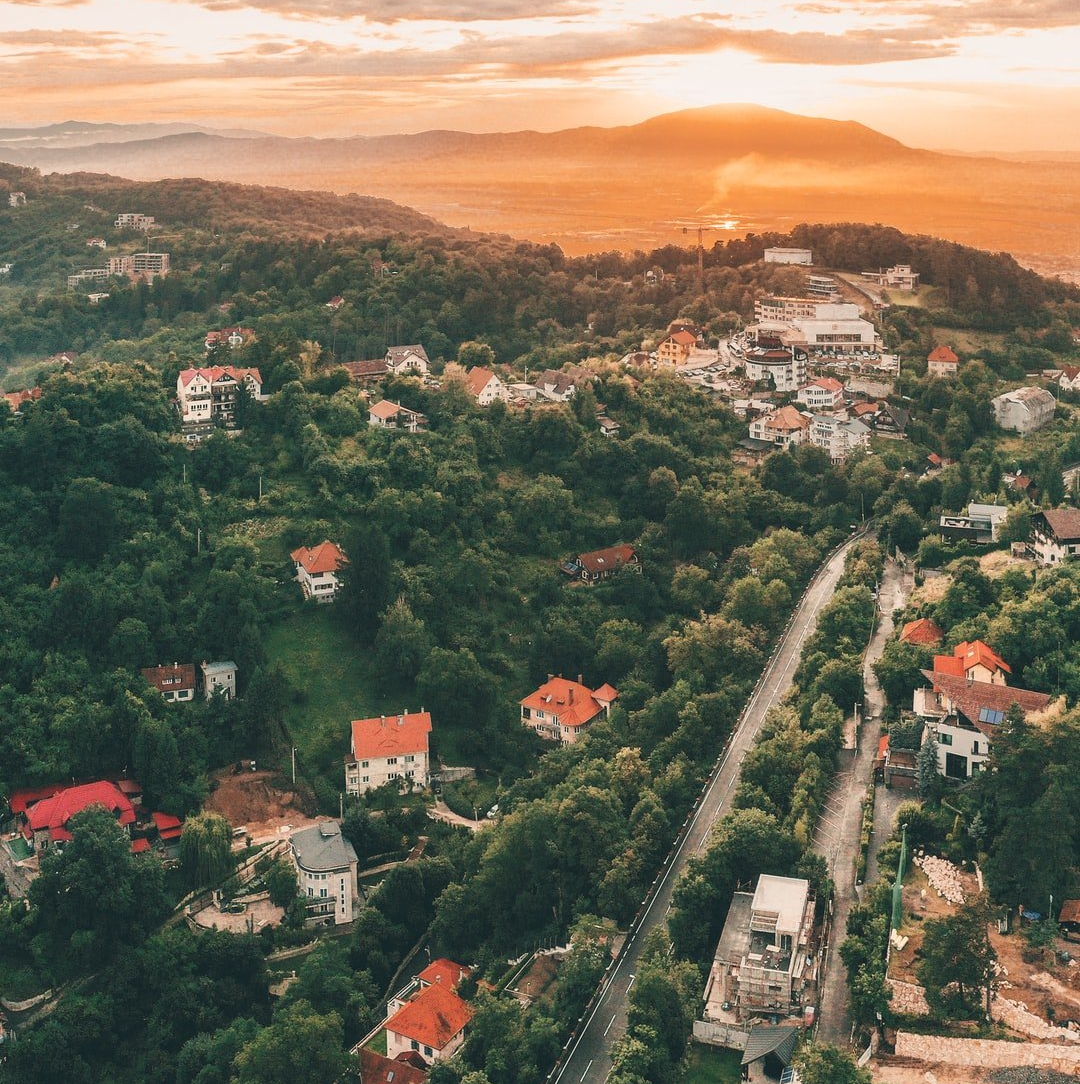
Who are you? Why are you here?
It’s Thursday night, and once again I’m in a Zoom break-out room with about 6 strangers, staring at a document, a land acknowledgment template, that is prompting me to acknowledge the territory I have arrived at and settled on by filling in its sections, one at a time. It’s both so simple, and so difficult. Who are you? Place yourself on the land, your roots, your privilege, etc. What do you do? And why are you doing this right now? This is the second time I’ve attended this land acknowledgment workshop, both times as a volunteer facilitator for Myseum Toronto, and the difficulty of answering the ‘simple’ prompts got me again. The task was clear enough: demonstrate respect for the land we inhabit by, first, acknowledging the transition we’ve made from being elsewhere to being here, wherever that is. And begin at the beginning. Who are you?
I’m Sandy. I live in Toronto. I am here to learn, though this niche of the student is one that I inhabit perhaps too easily. In 2014, I was moved by the Truth and Reconciliation Commission’s (TRC) report about Canada’s history of genocide and assimilation of First Nations peoples. I participated in some events in Vancouver back then, and together with friends and family members, responded to the TRC’s call-to-action for Canadians by sending a copy of Thomas King’s book, The Inconvenient Indian to every sitting parliamentarian with an inscription urging them to read, integrate, and spread the word that Canadians are ready for reconciliation. Despite my (our) good intentions, I realize now that King’s main lesson from the book – that access to more land is the reason for the colonizer’s actions – hadn’t really penetrated my life until this land acknowledgement workshop. Despite my concern about colonial violence, I hadn’t come any closer to knowing the land I reside on now any better than I knew the land in Vancouver I lived on when I first made a commitment to reconciliation. Except, of course, if you count real estate.
About six years ago, my partner and I bought a house, and at that time became intimately concerned by the land: its location, size, and proximity to city resources; the size and condition of the home that sits on it; and its value, meaning how much it would cost to buy. This is how the land appears in my story: as a place to live, as an investment, as property. That said, we do our best to care for it. We turned over the lawn and planted trees, bushes, flowers, and vegetables. We installed a rain-water barrel. We think it’s a privilege to get to live here, to plant a little garden, and shovel the snow off the sidewalk in winter. But it was the two workshop facilitators, artists and founders of cultural outreach organization INDIGENizeUS, Lindy Kinoshameg and Leslie McCue, that helped me to bring the land back into the spotlight of my reconciliation journey with their instructions, centre the land, centre the people. As I looked for a place to begin, I began to see how I see the land and people to begin with.
I admit that I don’t know a lot about beginnings, my own or that of the place where I live, but there are some facts that have grounded me enough that I have been able to move around the world with some security. I was born at St. Mike’s hospital in Toronto to a mother and a father and a set of relations that is both large and loosely connected. My family did not have a lot of money, but I grew up on a residential street with schools and playgrounds and laneways and sports fields all around, and wading pools made of concrete, which, in the summer, were filled with water that seemed like it had been chilling in the depths of Lake Ontario since the last ice age. I walked home from school for lunch each day, sometimes picking up a chestnut burr from the ground around the giant tree standing straight and massive in the yard of the big brick house on Wayland, and then walked back to school after I ate my grilled cheese sandwich and watched a Flintstone’s cartoon. I learned to skate, swim, and play tennis in city programs in city facilities that were everywhere around me. Everything in my neighbourhood – the track and tennis courts at the high school across from my house, the ravine that dipped down below street level hiding a small forest and creek, the dusty dirt laneway that linked up the 10 or so properties on my street, some of which were owned, some rented – it all seemed to belong to me, or I to it. I didn’t know I was poor for a long time. We stayed there on Malvern Avenue in a rented house down the block from the one my mother and most of her 15 brothers and sisters grew up in until the trifecta of increasing rent, stagnating wages, and the unreliability of certain race horses forced us out of that place and into Scarborough, on the eastern edge of the city I claimed and which seemed to claim me back.
After a while, I struck out in this world on my own, and I’ve moved many more times, across this city and to other places in the world, but I always return. I believe I always will because this is where my story begins. Like others whose ancestors came to the Americas from Europe since colonization began, my life has been transient, and the roots of my existence on this land obscured by time and the kind of purposeful forgetting that attends people fleeing misery. Malvern Avenue in the east end of Toronto may not be the beginning of my relationship to the land I now inhabit, but it is a beginning. It is a beginning of a story of movement and return, of a life becoming intertwined with the place where it lives, even when that life is mostly unaware of the depth of its relations.
It wasn’t just me who had trouble acknowledging the history of the land and our relationship with it. I don’t know how much my facilitation skills were to blame, but I found solace in the fact that other groups were similarly stumbling. Someone said, “I don’t have a relationship to the land…I live in a noisy, dirty part of the city”. Many nods and chat room affirmations followed. “I have no idea where I came from before I was here, in Canada”, said someone else. While others had a much fuller knowledge about their personal histories, particularly first-generation Canadians, I related to this experience of thinking, if I’m not from here, then where? I know so little about my family’s trajectory that I have been content to let “Canada” be my “home and native land” in my personal story, as much as in the official anthem (though the version sung in our family now includes the misheard-but-totally-apt lyrical change made by our kindergartner, “Oh, Canada, our home on Native land”).
Beginning at the beginning, it turns out, can be hard for us settlers! Attending these workshops made visible to me how far our Western, settler, consumer culture has led me (us?) from thinking about this idea of indigeneity, of belonging to the Earth, of being connected to it so intimately that we could, without embarrassment, call it “Mother”. Instead, when I think about my relationship to the land, I am fluent in the language of “the environment”, “property value”, or “natural resources”, but not in thinking about the land as the source of my life and all the others that have ever lived. How else to explain that my partner and I (but really the bank) “own” a house and the land it is on? Why else would I fret and moan about the climate emergency, but couldn’t name most of the plants I see growing everywhere around me, even in the sidewalk. These disjunctions are increasingly unsettling for me. I have found myself thinking more about the land I occupy and inhabit, the ways in which the settler system thinks about it, how words like “property”, “natural resources” or “the environment” don’t quite capture the reality of the land as a home, as a creature, as creator, as Mother, as the condition for all of this confusing, furious, contradictory, heartbreakingly human experience. That is, I am beginning to see the gap between where I come from, and where I actually exist.
But again, this is just the beginning. The template then guided us to say something more about where you are. Why are you thankful for being on this land, in this moment? How are you thankful for the plants, animals, trees, insects, animals, fish, and water that sustain all life? This again was a stumbling block for many of the people in my group. We can be thankful in a general way for the systems that support all life on Earth, we explained to each other, but drilling down to a personal sense of gratitude for things like animals, soil, plants, insects….well, the realities of a mid-winter Canadian city with its smog-coloured snowbanks and plastic bags blowing in the bare branches of the trees planted in the sidewalk may have been too present for us to feel the gifts of the Earth as we Zoomed from our private, climate-controlled, indoor spaces. The tone was yearnful, bordering on pessimistic. If even we who are motivated to be agents of reconciliation can’t muster some authentic appreciation for the gifts of the Earth, what hope can there be? We worked on ways we could verbalize this perceived lack of connection with the land in our acknowledgment, but in the end we didn’t commit anything to the template.
Can you acknowledge the history of the people? Can you acknowledge the agreements of the land you stand on? What do they mean to you? Can you name the nations (and pronounce them) that cared for and lived on these lands? What do those named nations mean to you? Many of us in these workshops had fractured and piecemeal understandings of the First Nations peoples whose ancestors occupied and inhabited the lands where most of us sat in Toronto and the region. Many of us had heard the names of some nations from other land acknowledgements we’d listened to, but we had trouble expressing what they meant to us. And the agreements? The treaties, the wampum belts, the rules for communal living, for shared responsibility for preserving the lands we now “own”, occupy, and inhabit? Comparing what knowledge we brought with us to the workshop, many of us realized how little we knew about the agreements regarding the land that pre-date the Canadian political and legal systems. What do you know about Treaty 13? The Dish With One Spoon Wampum? The Toronto Purchase? Most of us were not as informed as we wanted to be about the treaty agreements and ways of life of the peoples who originally and continuously occupied and inhabited the lands we now call Canada, an ignorance which was felt especially by those of us also committed to social justice for people we might call “newcomers” or “immigrants” to Canada. On top of this irony, it only took a little Googling (about 10 minutes worth) to return enough information that, when shared with others and mixed with what each of us was able to find out independently, helped us develop a pretty good understanding of Treaty 13, or the Dish with One Spoon wampum (the respective topics of my two group discussions during the workshops I attended). Suddenly, we had new information which could be integrated into our acknowledgement of the land. At last, something to add to the template! Progress! But also a stark realization that this information was always available to us, and relatively easily obtained. How is it that we never thought about it? How can this history of settler and First Nations relations not be known, not learned, not disseminated? An erasure of what was here already, added to the erasure of my origin story. It is no wonder I’ve been so ignorant, living in the empty spaces where these two interrelated, invisible histories overlap.
Slowly, the template was revealing ourselves to us, the gaps and blank spots even more revealing than the sections we could fill in. No one used the term, but the process we went through with Lindy and Leslie was a decolonizing process, that is, an exercise that made visible the ideological and cultural water in which we settlers swim while learning to become aware of and to appreciate the ideological and cultural traditions of the Nations whose lands “Canada” now occupies. We were learning to tell a new story of life in Canada, not the one centred on the outcome of colonial conquest (as if the land or people were “conquered” by Canada or its colonizers), nor our government’s system of management (land zoning laws, private property, so-called “resource” industries, the indescribably horrible reservation and residential school systems), but a story of humanity’s – of our – interrelatedness, and of our integration within the bigger story of all life, and the source of life, our Earth. And however hesitant and self-conscious we were with our statements at first, when each of the small break-out groups shared their learnings through their land acknowledgments, a new picture of interconnectedness to the Earth emerged again. Each person’s individual revelations/insights blended with those of their groups as we worked through the template prompts, and when shared, they helped to crack open the habitual story of our disconnection from Earth, even for those of us who careen over pot-holed concrete in buses and cars, or commute in underground subways for years, decades, whole lifetimes! Acknowledging the land involves a recognition of our responsibility to this connection, even if it is a responsibility currently unmet by the Canadian culture and systems that help to shape our daily lives.
In these circumstances of erasure of the past combined with an attitude of extractive, destructive, control over nature, it is hard to remember that we are all indigenous to somewhere on this Earth, we are all dependent upon it, we all arise and struggle and prosper here. As a Canadian, however, I claim no indigeneity, on Turtle Island or abroad. I am in a line including the settlers, the people “like me and mine” as writer Rebecca Solnit put it recently, “the uprooted, displaced, ungrounded, and lost”. It may sound bleak, but noticing this has been key reshaping my story. I can learn to centre the land in a new way, I can learn about the treaties, and about my responsibilities to them, since I am in a territory that has one (perhaps the first democratic process ever). I can learn about the people, their Nations, and their ways of living in this territory that now includes St. Mike’s Hospital (where I was born), Malvern Avenue (where I spent my childhood), and Little Jamaica (where I live now). I can do this – notice the land, the people, and the other creatures, notice myself and my ways of living, and the ways these two worlds affect each other – forever. And in so doing, hopefully become more and more deeply bound up in the land, its rhythms, its creatures, and its future.
Although it rarely rises up to my conscious awareness, the tradition in which I was raised, aside from the influence of the Canadian culture in general, included the belief that people are molded from the clay of the Earth, and that we all eventually return to the Earth, will become the clay again. Among the many new things I learned from the workshop leaders is that Anishinaabe tradition teaches that their ancestors descended to Earth from the sky, that Anishinabeg – the word referring to the people as a collective – translates to “from whence lowered”. These stories of beginnings are different, and that is part of the point, I think. Before respecting differences, there is the noticing. Noticing not only the difference in origin stories, but also differences in what my tradition teaches – people exist as part of a living Earth – and how I live it out. The cultures that gave rise to colonization, and the societies that developed out of them, has buried the link that connects us to the Earth underneath the pavement of our cities, or has relegated it to the Old World, that abstract and faraway place now lost to time. In place of connection, I live out a relationship of entitlement to the land – we put a road here, a mall there; we dig out the minerals and clear-cut a forest; tunnel a pipeline through it all. If I can reach back beyond the socioeconomic analysis of my relationship to the land – do I own property? What kind? How much? – and back through time, intergenerationally, my story brings me back to the land (though not necessarily this land, on Turtle Island), back to the clay. But the difficulty of bringing this relationship into words was, is, significant for a modern, developed mind.
Still, I am heartened that we Canadians, who apparently have believed that we ‘settled’ this land and its peoples, can re-think our place in this place, especially with regard to the First Nations who have occupied and shared these lands continuously before and after colonization. But also, and crucially, with the land and water, the animals and fish and insects, the stars and moons and the whole universe, because there is no difference between nature and humanity. The trees are our lungs, the water flows in our veins, the clay forms us, and one day this will be all that is left of us.
I encourage everyone to try creating a land acknowledgement that brings them into deeper relationship with their place in the world, and the land that sustains them. For details about the workshop I attended, please see Myseum Toronto or INDIGENizeUS. For a copy of the land acknowledgement template that you can use to contemplate and draft your own land acknowledgement, please email me at stories@earthliteracies.org. To hear/see my own land acknowledgment, stay tuned to this space!
For anyone looking to begin, deepen, or broaden their own decolonizing journey, please join the Programs in Earth Literacies upcoming workshop, Decolonizing Water: An Introduction to Indigenous Water Laws, with writer, educator, and activist, Denise Nadeau. In this four-session interactive workshop we will explore what decolonizing our relationship with water can mean for our communities, our natural world, and ourselves. We will examine our own embodied connection to watersheds and bodies of water, and begin to explore water teachings from Anishinaabe, Okanagan/Syilx, and Heiltsuk peoples. We will relate the Indigenous principle of reciprocity to non - Indigenous gift traditions, and discuss the implications for human relationships with water. The workshop will include guest speakers, body exercises, short videos and on-line resources, as well as readings from her book Unsettling Spirit: A Journey into Decolonization (MQUP, 2020).
